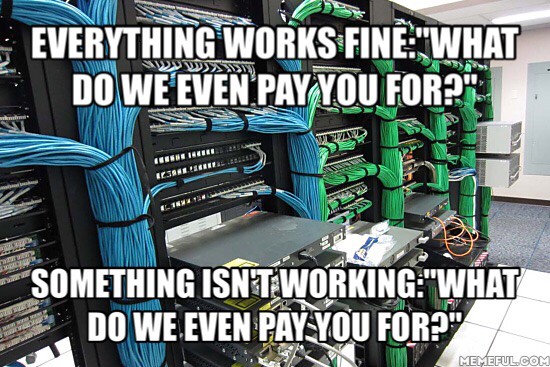Heroes and Villains and the time in-between

Dean Robinson
Managing Director, Versent

Dean Robinson
Managing Director, Versent
The Hero
As a managed service engineer you are often rewarded with praise for successful implementation of a change or delivery of an improvement idea. On occasions, you “save the day” by advising or detecting a possible issue and avoiding service impact for the client’s internal users and customers – and in some cases protecting the client from significant brand damage. This reward and recognition process is obviously a positive experience for the managed service engineer.
The Villain
All those long hours, late nights, weekends, then one mistake, one missed alert… When a service outage occurs the managed service engineer turns from hero to villain. The engineer is now on the emotional roller coaster of having saved the day and restored service to being the villain and ‘face’ of a problem and the cause of the client’s and customers’ pain. This is totally understandable. One must always put themselves in the client’s position. They are ultimately paying for the service to be managed and trouble free. Emotionally the engineer involved is most likely feeling down and somewhat responsible and therefore it is important to ensure they have the support and guidance they need to have the confidence to return to the keyboard and get cracking on the in-between. Like any strong team, comradery and cohesion is important, particularly in managed services – it is a team sport. During times of high pressure, you need to rely on your mates. Knowing they are willing to drop everything to help is critical. This is a key attribute one must find when searching for managed services engineers.

The In-between (continuous improvement)
The managed service engineer spends most of their time in-between, or in DevOps speak, the continuous improvement cycle. It is critical that this time is spent being proactive and ensuring the engineers are focussed on:
– Making your managed services life easier
– Automation enhancements
– Client management
– Documentation
– Closing the design and development feedback loop
– Self reflection
– Communication
The last point, in my opinion, is the most important – communication. The client sees the managed services engineer primarily in either hero or villain mode, however it’s what they can deliver to the client and its customers in-between where the value of the partnership is proven and built upon.
In summary, continuous improvement and automation will drive service stability and keep your engineers sleeping at night. Effective communication of the business value add will keep your clients happy. These should be the core values of every managed services team.